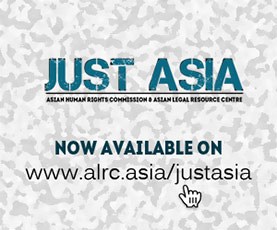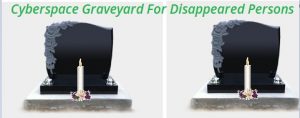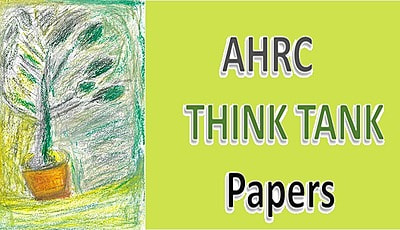UPDATE (Sri Lanka): Evidence given in criminal case of torture victim Tissa Kumara

[RE: UP-032-2006: SRI LANKA: Torture victim Tissa Kumara wins fundamental rights application at the Supreme Court; UP-023-2006: SRI LANKA: Threats made against Koraleliyanage Palitha Thissa Kumara must be dealt with immediately, UP-84-2005: The tuberculosis patient confirms Tissa Kumara’s allegation; The Sri Lankan state’s unwilling to address nasty policing, UP-32-2004: Tissa Kumara receives further death threats; UP-28-2004: Police pressure the torture victim to withdraw case by threatening his family; UP-22-2004: Tuberculosis patient kept in solitary cell due to fabricated charges by police; UP-21-2004: The torture victim acquires tuberculosis by the direct action of the police; UA-18-2004: Severely injured torture victim need urgent medical treatment issued]
———————————–
UP-049-2006: SRI LANKA: Evidence given in criminal case of torture victim Tissa Kumara
SRI LANKA: Torture; collapse of rule of law
———————————–
Dear friends,
The Asian Human Rights Commission (AHRC) writes to you with evidence given by Dr. Muturata Mudiyanselage Agith Jayasekara, the doctor in charge of medically examining Tissa Kumara, in the criminal case currently before the High Court regarding the latters torture by officers of the Welipenna police.
When giving evidence, the witness (Dr. Jayasekara) stated that on 12 February 2004, Thissa Kumara was produced before him by a prison officer on an Order of Court and that he medically examined the prisoner and talked to him. During the conversation he obtained a history of the incident from the patient and Dr. Jayasekara repeated some of this in court. Thereafter he explained that he prepared a report about the examination he had done. He sent the original of that report to the Mattaguma Magistrates court on 11 July 2004. He has a certified copy of the original and it was on the basis of that that he was giving evidence.
Dr. Jayasekara said that after recording the history of the patient he examined the body of the patient. The patient, he noted, was of good mental health though suffered from some fear. When examining the body, the witness noted 32 injuries to the patients body. He also noticed he was limping.
The witness said that the patient told him he was attacked on his legs, chest, shoulders and head. These were examined and notes were made. On the area of the head and the neck he observed four injuries, including some large lacerations.
The witness stated that he believed that the injuries on the neck and the head were caused by a blunt instrument. The third injury, which was a tramline injury, could have also been caused by a blunt instrument, such as a cricket pole as stated by the patient. There were two injuries to the ear lobe which could have been caused by a hand or foot or by a blunt instrument like the cricket pole.
The witness also noted several wounds to the chest, stomach and back. Again many of these were deemed tramline type injuries, which could have been the result of a blunt instrument. A fractured bone was discovered during the examination of this part of the body.
The witness further said that there was a particular style in the injuries and that this style supported the patients claims. The witness also noted that the injuries sustained could not have been caused by a fall, but were more in line with an injury as a result of a blow by a hard object. The witness further said that some injuries were in the process of healing and that the injuries were caused during a short and similar period of time. This could be seen from the colour of the injuries.
The witness also said that other than the assault the patient mentioned the spitting incident and the patient was examined on that basis. The patient said that somebody who had tuberculosis had spat into this mouth and for this reason he could have acquired tuberculosis. The witness therefore medically examined his chest and took x-rays. At the time of the witnesss examination there were no signs of tuberculosis. Answering as to how long it would take for a person to acquire tuberculosis after being spat upon the witness said that tuberculosis can be acquired over a long period of time and a specialists opinion should be obtained about it.
The witness also said that other than taking x-rays himself, he referred the patient for an examination by an ENT specialist as the patient had complained of tinnitus. According to the specialist the ears were in good condition. The patient was also referred to a psychiatrist at the general hospital and according to his report the patient was in a good mental condition. It was after all that the witness prepared his judicial medical report. In his findings, the witness expressed his opinion that injuries 1- 31 were not grievous but that injury 32 fell under section 311(g) of the penal code. He also expressed the view that all of the injuries were caused by a blunt weapon considering the style and the manner of injuries.
In concluding, and when being asked if the patient had told him that a person who had tuberculosis had spat into his mouth he answered the following questions: Did he say that this was done according to the pressure of someone else? Answer: That was how it was said. Question: How was it said? Answer: I have mentioned in my report in the section of history that a person called Sub Inspector Silva had forced this person to spit.
The case is pending for final submissions by lawyers on 27 March 2006. It is worth noting that the Supreme Court of Sri Lanka held on 17 February 2006 that officers of the Welipenna police station severely tortured Koralaliyanage Palitha Tissa Kumara by forcing a tuberculosis patient to spit into his mouth and by beating him critically with cricket stumps, causing over 32 injuries. This judgment by the Supreme Court is a condemnation of one of the most heinous acts of torture committed by a Sri Lankan police officer, and exposes shameful aspects of policing within the country.
To see further details of this case, please refer to: UP-032-2006, UP-023-2006, UP-84-2005, UA-18-2004, UP-21-2004, UP-22-2004, UP-28-2004 and UP-32-2004.
Thank you.
Urgent Appeals Programme
Asian Human Rights Commission (ahrchk@ahrchk.org)
To support this case, please click here: SEND APPEAL LETTER



